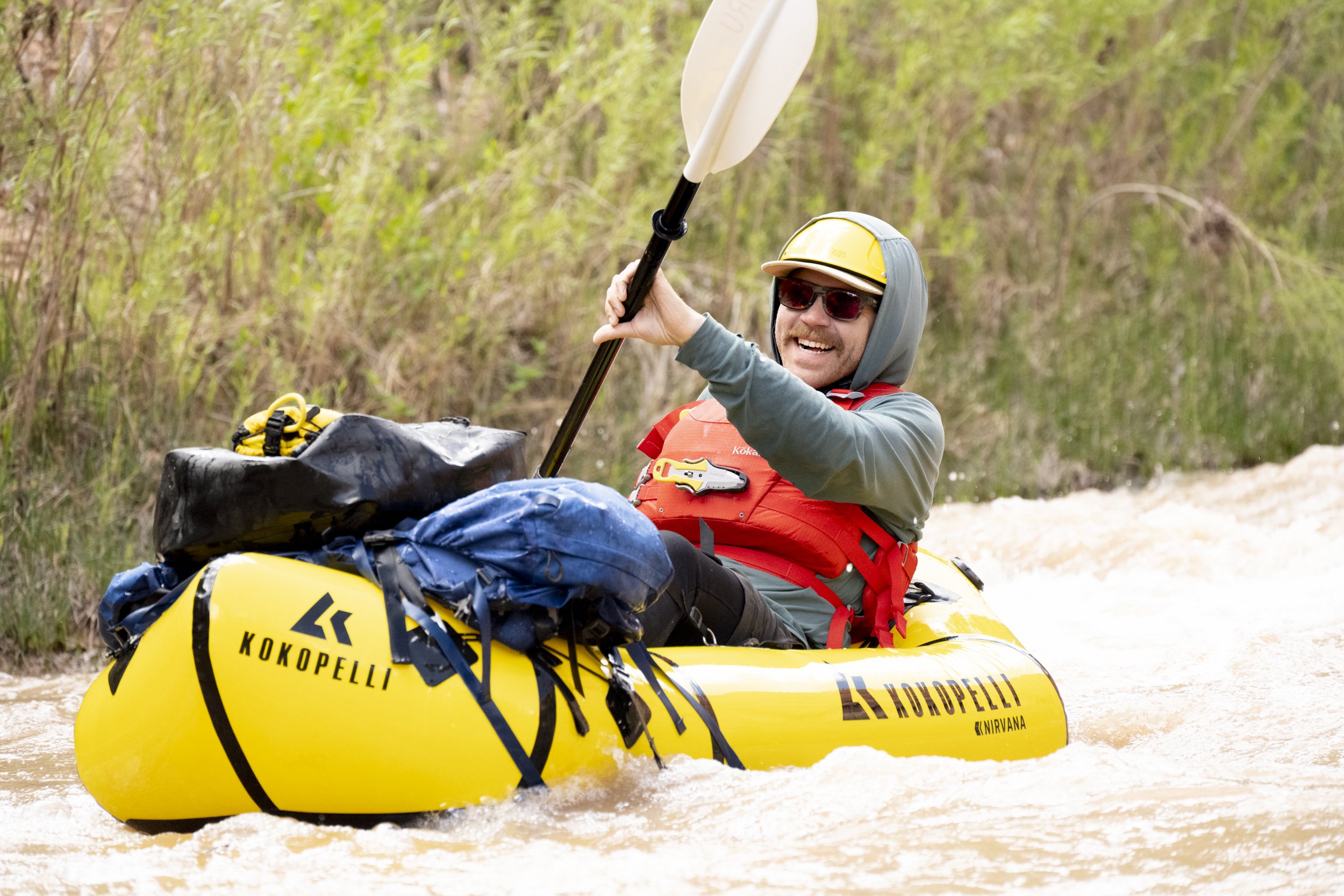Alex bathing in the beauty of the Escalante
Rafting this canyon was as if paddling through 40 miles of fine art. No breaks in beauty. Every section awe inspiring. And to be moving down the river, the act of paddling, hearing the water move off of the paddle, interacting the body with the force that created this masterpiece was like dancing with the millions of years that it took to create it. This was truly an experience of a lifetime.
Early this May I experienced what felt like a trip of a lifetime. I wish I had written about this very shortly after this adventure while everything was fresh in my mind, but life gets busy. Here I am on a flight home from a family reunion in Maine, and this is the perfect time to get to focus on sharing some of this experience with you all. As many of you likely know, the West got hammered by an unusually wet winter. We more or less got all of the storms that were rolling through the Eastern Sierras, and we ended up with over a whopping 300% snowpack! That’s more or less our last 5 or 6 winters combined. With all of that water, it seemed like a natural move to prepare for some sort of white water rafting adventures, as we are blessed in Southern Utah with magnificent canyons which get perfect flow rates to get to enjoy those areas by the means of traveling on water. My friends are the ones who initiated the momentum into this new-to-me pursuit. Some had experience doing private (non-commercially guided) trips down the Colorado River through the Grand Canyon on rafts, so they were great mentors in terms of reading the river, line selection, paddling technique, safety info, etc. But instead of traditional rafts as our method of transport, we all purchased our own packrafts. These water vessels are kind of like an inflatable kayak, but different. The differences: Very lightweight, compact and very capable in technical whitewater. In addition, the boat is cleverly designed to accommodate gear loads inside of the inflated boat. While the boat is deflated, you open a water/air tight zipper on the exterior of the boat, load whatever gear you don’t need for your time on the river that day inside the boat, zip it up, then inflate the boat.
Ok, now that you have a bit of an idea of what a packraft is, time to chat about the adventure itself. Myself and 3 friends started off in early May to do the Escalante River, which is located inside Escalante National Monument. We could have done a longer version, but opted for the shorter version due to time constraints. Also, we had heard the upper section was a tunnel of Russian Olive trees, an invasive tree that hugs river banks with robust thorns, ready to pulverize the lightweight material that the packraft is made from. We ended up doing a 40 mile section over 4 days. Our team was comprised of Alex, whom had the most river experience, Brett, and Julie, a friend of Alex’s who he met while traveling in Baja last year. I did not Julie, and I was excited to get out with her based off of all of the great things I had heard about her.
Packing for the trip was kind of entertaining. While I had done a handful of days worth of paddling the packraft in rivers near Zion before the trip, none of us had experience pack rafting for multiple days in the backcountry. I knew it would be quite a bit of gear…. but holy cow!!! Our packs were likely in the 70 pound range. We had tents, sleeping gear, pacrrafts, paddles, water, food, camp stoves…. etc…. everything that you need to live self-sufficiently. In addition, some boat repair materials which got put to good use.
The approach with a much heavier than accustomed to backpack
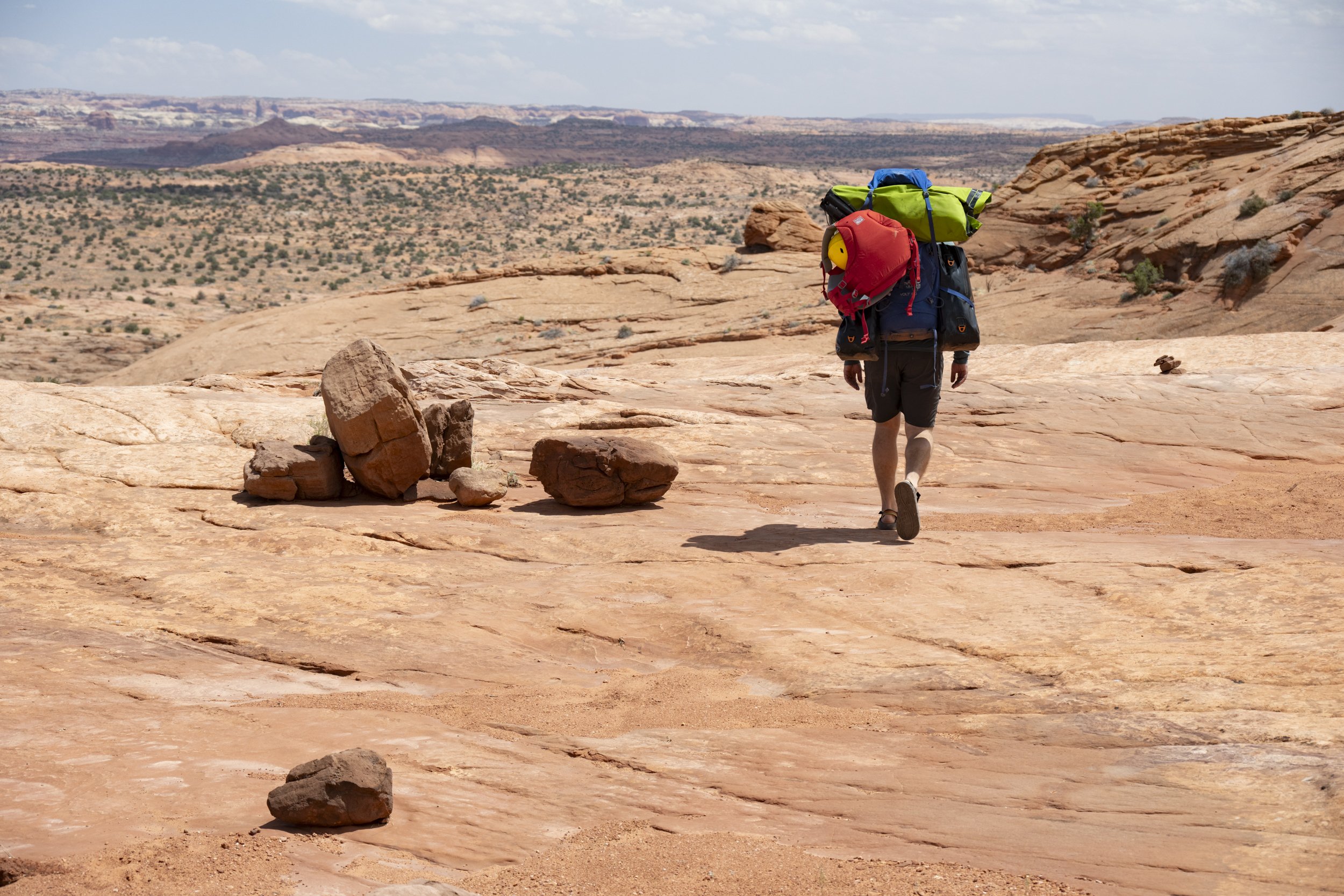
We met at the trailhead and started off on the 3 or so mile hike down into the canyon. As we navigated through sighting cairns periodically, we were greeted with various patches of wildflowers that filled the air with sweetness. Best wildflower season ever out here this spring!! Eventually we hit the water where another team of boaters were loading up to get into the water. After we geared up, and dropped the boats in, we were off. Heading into the unknown on a great adventure. To be honest I really did not know what to expect from the canyon. I hadn’t looked at any photos of what it was like down there. That’s actually often times a deliberate decision in order to not be influenced, or to create expectations. The unknown… it is one of the things that drives my interest in the outdoors, and I like to get the full experience by not doing too much research via photos.
Water levels were a big concern heading into this trip. This river is fed by snowmelt at very high elevations, so it actually is one of the later rivers to run in the spring season. It is common for the river flow rates to be too low to be able to raft. At the same time, we had an ungodly amount of snow at those high elevations ready to melt off. So, there were concerns of not having enough water, and having scary amounts of water. Alex did the leg work speaking with rangers days before the trip, and the reckoned it would be just about perfect. They were correct. The river fluctuated each day, with our first day being the fastest and heaviest flow. Everyone in the crew navigated it beautifully. Sure… some little gentle bounces off of rocks, small twigs hanging off of the trees over the water, but overall nice clean runs.
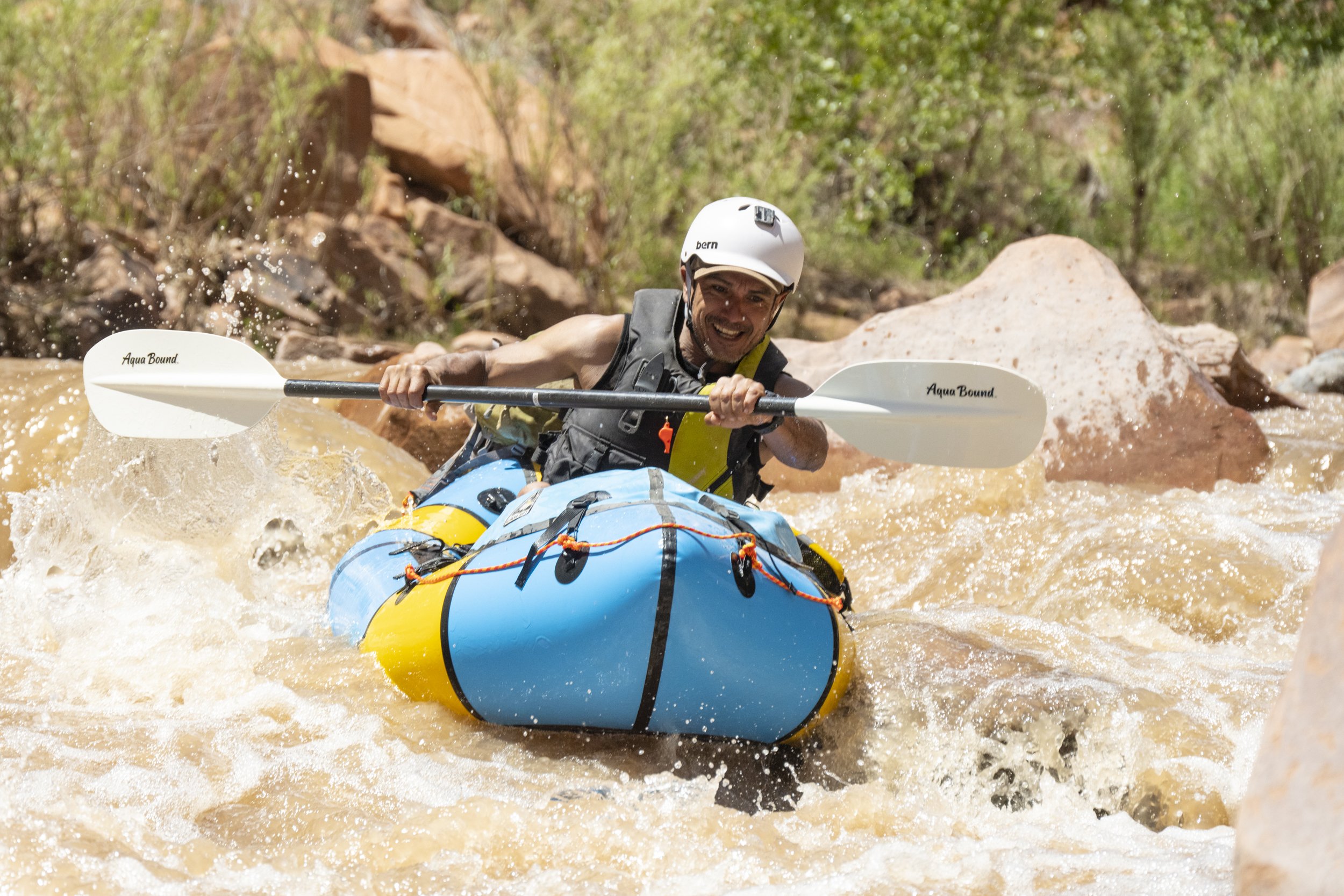
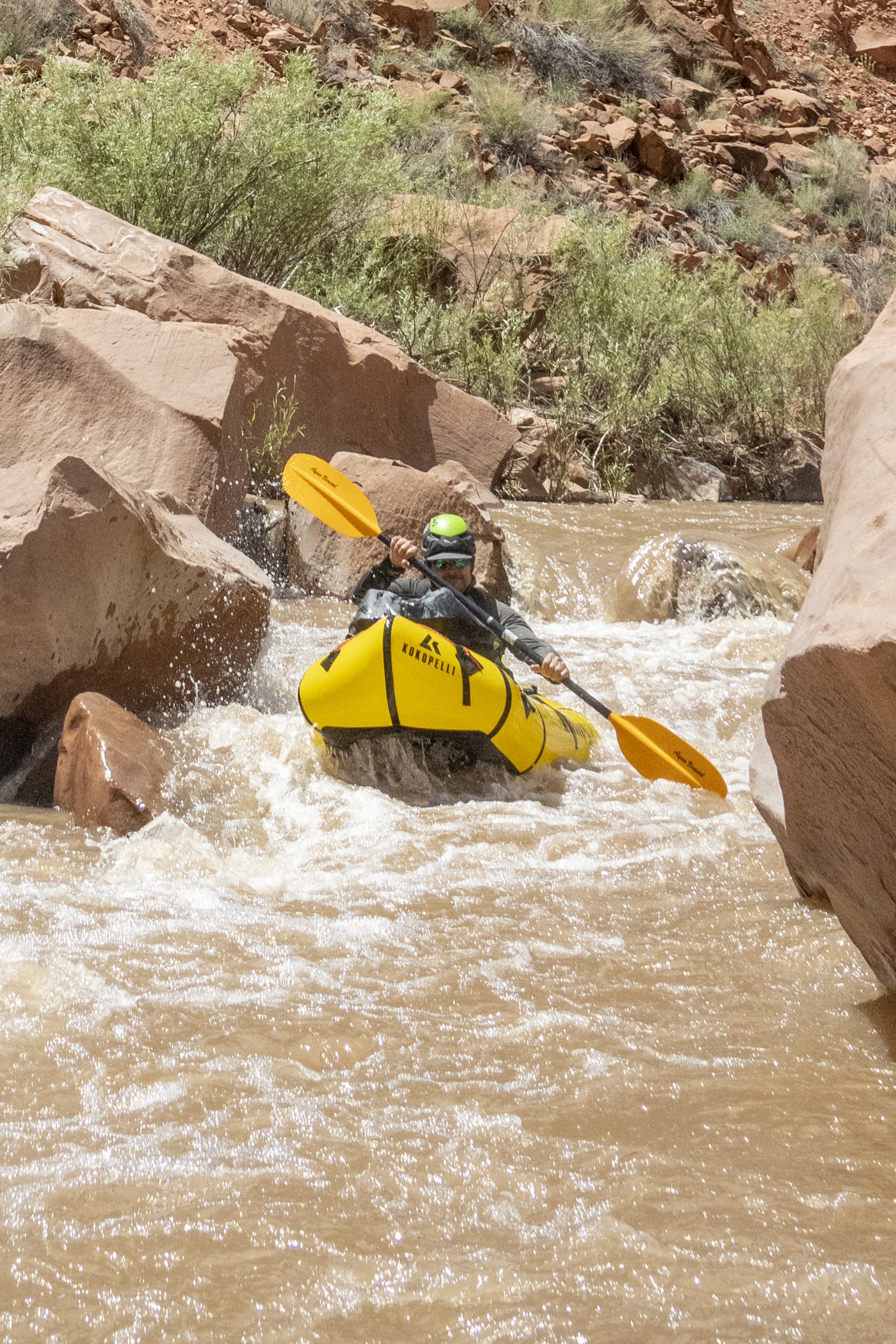
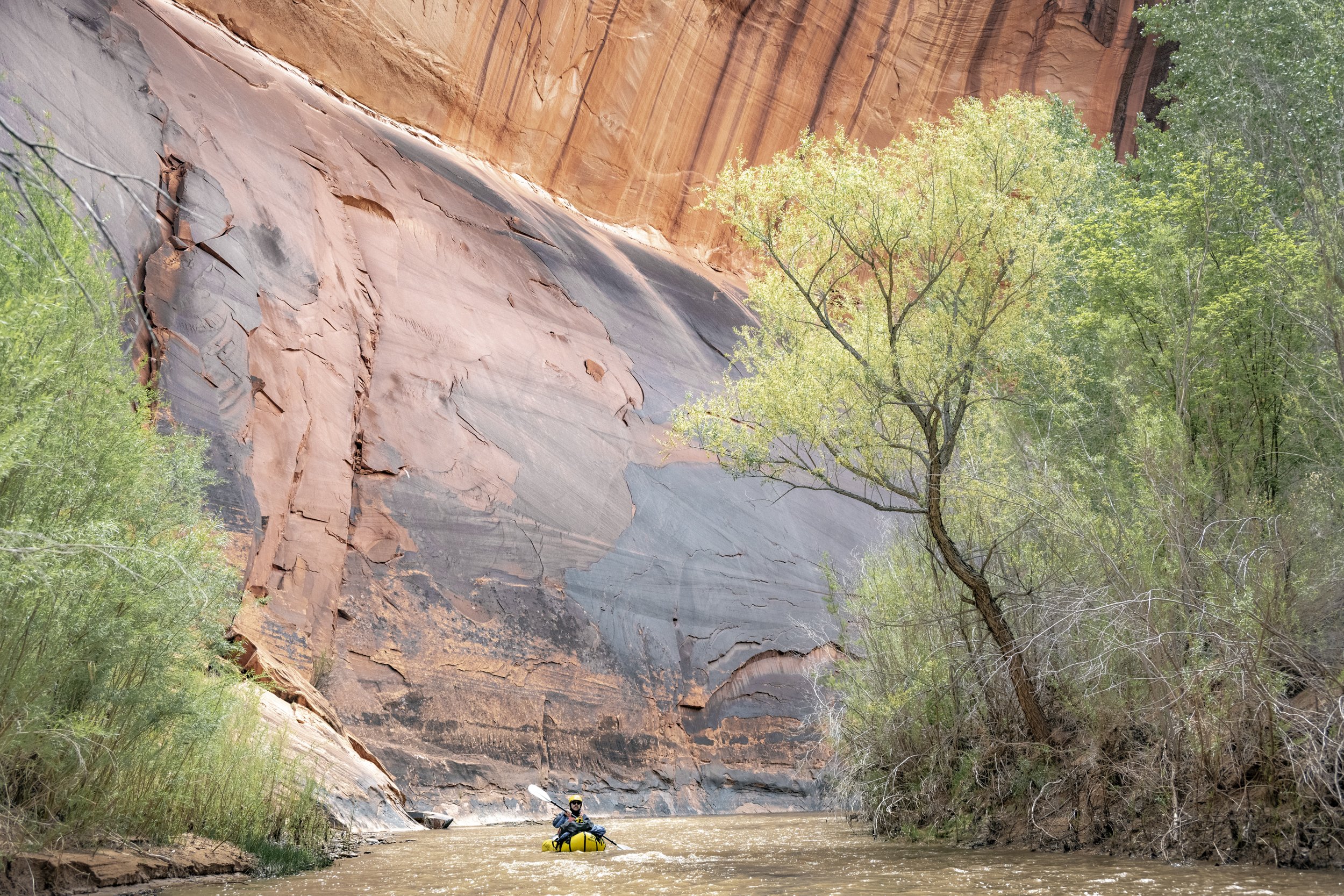
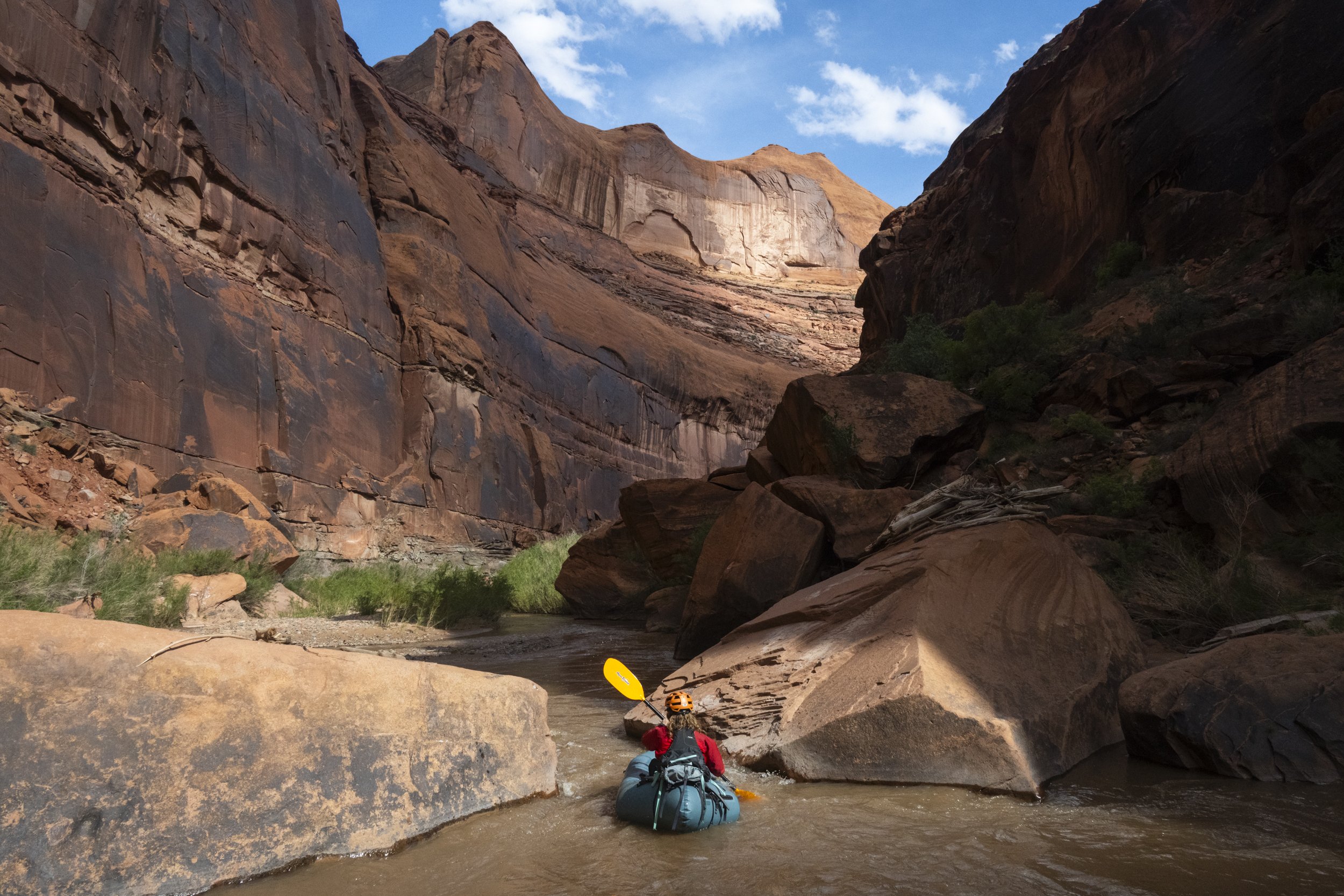

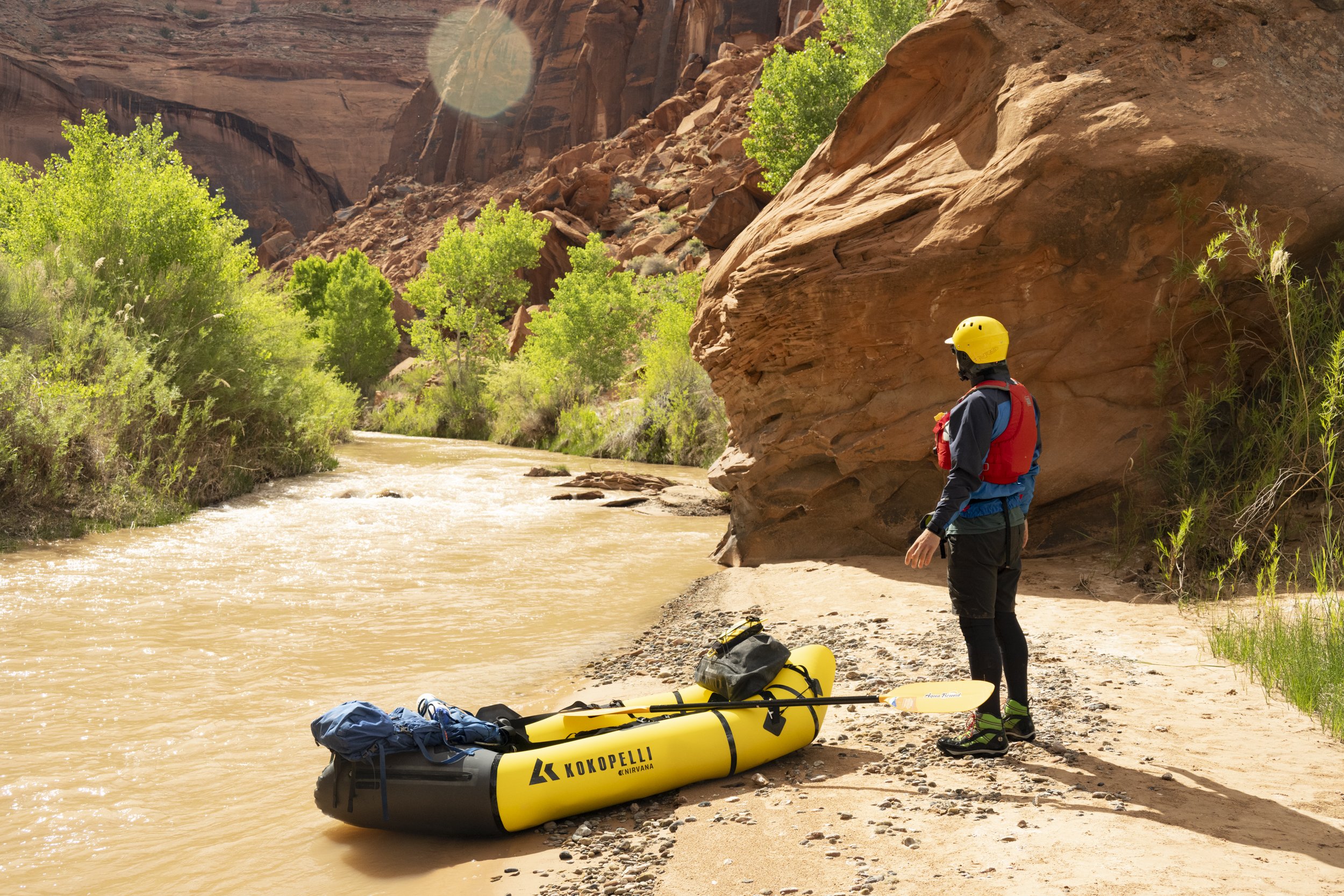
As the days progressed, water levels got lower. This actually made the river much more technical as you would need to calculate you lines into the rapids better in order to not hit protruding rocks that would get your boat stuck. To give you an idea of river levels, if you were to get into some sort of a bind in the river, get out of your boat and stand up. Ya, pretty reasonable stuff. For a novice like myself, it was perfect as it was not intimidating and it was low consequence. With that being said, the realities of the risks involved in this adventure were present. It didn’t take long into the trip to realize that if something went wrong and you needed to exit the canyon, your only option was down to the planned exit 40 miles down the river. The walls in the canyon were towering over us from several hundred, to 1,000 feet during the entirety of the trip, with nowhere to exit. Any sort of real injury down there would most likely require a search and rescue effort by a team of professionals, and even at that, it would be pretty hairy. Due to the narrowness of the canyon, rescuers would unlikely be able to get a helicopter down there, and the canyon walls so tall that ropes lowered from the top of the canyon would not work either. Awfully curious to how a rescue would work down there. While this all sounds quite adventurous, and it really felt that way due to the importance of not sustaining injuries, this was a very mellow river to raft, and we saw a family with some younger kids, and some obviously very seasoned boaters who felt comfortable without helmets or PFD’s. This was the case at the flow rate that we ran it at. With higher levels, I’m sure it can get quite adventurous.
There were two aspects of this trip that made it so memorable. The human aspect, and the nature aspect, both being as rich as the other. On the human end… The amount of laughter was borderline out of control. I would literally get exhausted by the end of each day from laughing so hard. All 4 of us have a lot of smile lines around our eyes through years of laughing, but Julie…. she is the most avid laugher of all,…. a freakin’ seasoned pro. That girl LAUGHS!!! She was so much fun. Our group dynamic worked out perfectly. Everyone fun-loving, youthful, curious, supportive and considerate of each other. Communication was clear, respectful and open, even in moments of stress (which were few). The moments of stress: Having a hard time finding a beach to camp on at sunset time, running out of food at the end of the trip, challenges finding drinking water sources, and one person lost a paddle when they flipped, and they let go of the paddle. This is the biggest no-n0 of all in packrafting and kayaking. Without a paddle, you have no control to get you in and out of currents. If you just try to float where the river takes you, you’d end up hitting trees, rocks, getting pulled into undesirable sections of river non-stop. I learned this the hard way on a day trip near Zion before this trip. I dropped my paddle during a scary situation after flipping out of my boat. I ended up having to hike out. It worked out conveniently that day, but we would have been in trouble down in the Escalante. Fortunately we recovered the paddle, and there was a lot of hootin’ and hollerin’, and of course… more laughter.
I of course brought a camera. But because weight needed to be controlled and packing space was limited, I had to be very selective on what I brought. I brought my Nikon Z7ii, along with a 24-200 f4-5.6 without a tripod. By the way, that is my abolutely favorite lens that I own, even though it is not a “professional” lens. It is versatile, light, sharp, compact and rugged. I’ve put that thing through a nightmarish hell in it’s life, and it is performing like it’s a brand new professional lens. Love it. We really had to make mileage each day, so there was very little time and opportunity to pull over to set up compositions. Almost all of the shots of the rafting were shot while I was in my boat rafting. There were flat water sections, but the water was always trying to push me somewhere…. into bushes, into rocks, spinning me around. So exposure settings, focusing settings, and composing while being spun and having a short window of time before entering rapids created quite a dynamic shooting experience. Certainly took more than enough risks with having the camera around my neck in those situations, but it all worked out. On top of our boats we have a dry bag attached to the boat known as a “bow bag”. This allowed for quick easy access to the camera and other day time necessities.
We had nice slow starts to the day each day. Late wake ups, breakfast, savoring the flavor of hot coffee while staring at the canyon walls and listening to the songs of the river, short walks for moments of solitude with our environment. Pack up, clean and lubricate all of our zippers (which is absolutely critical to have the boat hold air), and back onto the river. Each moment of rowing down the river was engaging. There really were very few moments where you could kick back and just stare at the place for long stints. Obstacles were pretty back to back, and if your attention was kept by the beauty of the canyon, you were likely to get stuck on rocks or get driven into pokey branches on the river banks. Take a break for lunch, laugh until our abs hurt, then back into the boat. Paddle, paddle, paddle. Find a good beach with clean water nearby and setup camp. While we could have taken advantage of the water in the river, we were looking for spring sources. The river was muddy and had a lot of sediment. We would have had to take water out in a collapsable bucket we brought, use a settling agent, then purify the clean water on top. Finding spring water saved a lot of process. Once camp was setup, we’d eat, and it was pretty much straight to bed. We were tired every day. Tents weren’t very necessary so some of us slept under the stars for some of the nights, it was peaceful.
On our third day we had a very memorable experience that came out of nowhere. We floated a section of canyon wall that was absolutely stunning. Purples, pinks and reds painted softly a towering wall with no top in sight. It was a grand masterpiece that was impactful to each one of us who floated along it, viewing the detail up close, while feeling as if a speck in it’s grandness. It felt as if I was in a temple, the wall humbly commanding reverence, and in return for our reverence it gifting us with a spiritual sensation. No revelations, no thoughts, just a pure, impactful moment for the soul. It didn’t need to be spoken about amongst us. We each experienced it, and we all knew that each other had experienced it. Absolute highlight of the trip.
Well, all things must come to an end. Our last day on the river was a fairly short section of water. We paddled until we saw the greatest exit marker that could possibly exist. A gigantic arch called “Stevens arch”. This was our sign that the take out was coming up. It took us a while to find the actual exit trail. But when we did the sandy slog uphill began. The hike out was most certainly dreaded by us all. We knew that it was horrible, myself having done it in the past exiting a different canyon. It’s steep loose sand in. One step forward 1/2 step slide back, for 3 miles. At a certain point we found an abandoned boat and carried it up thinking we scored some free gear. It is known that people sometimes who have understimated the adventure ditch gear. Very much fround upon, it’s the same thing as littering. So thinking we were picking up trash, and thinking we just got a sweet 2 seater raft to use as a communal raft, we came upon a man that was in that group. The friend who’s boat we were carrying fell and hit his head on the hike out, dissoriented and being in his 70’s, this friend we ran into was a physician and was trying to get search and rescue help via his satellite phone. His wasn’t working so we hit the SOS button on our satellite beacons, and I was able to find service and call 911. After speaking to a couple of people and sending gps coordinates, 15 minutes later in came the helicopter. I’m sure all went well from there, but we needed to keep hiking, by this point, Brett and I were out of food after having to ration the last day. Time to move… and with no free boat in hand.
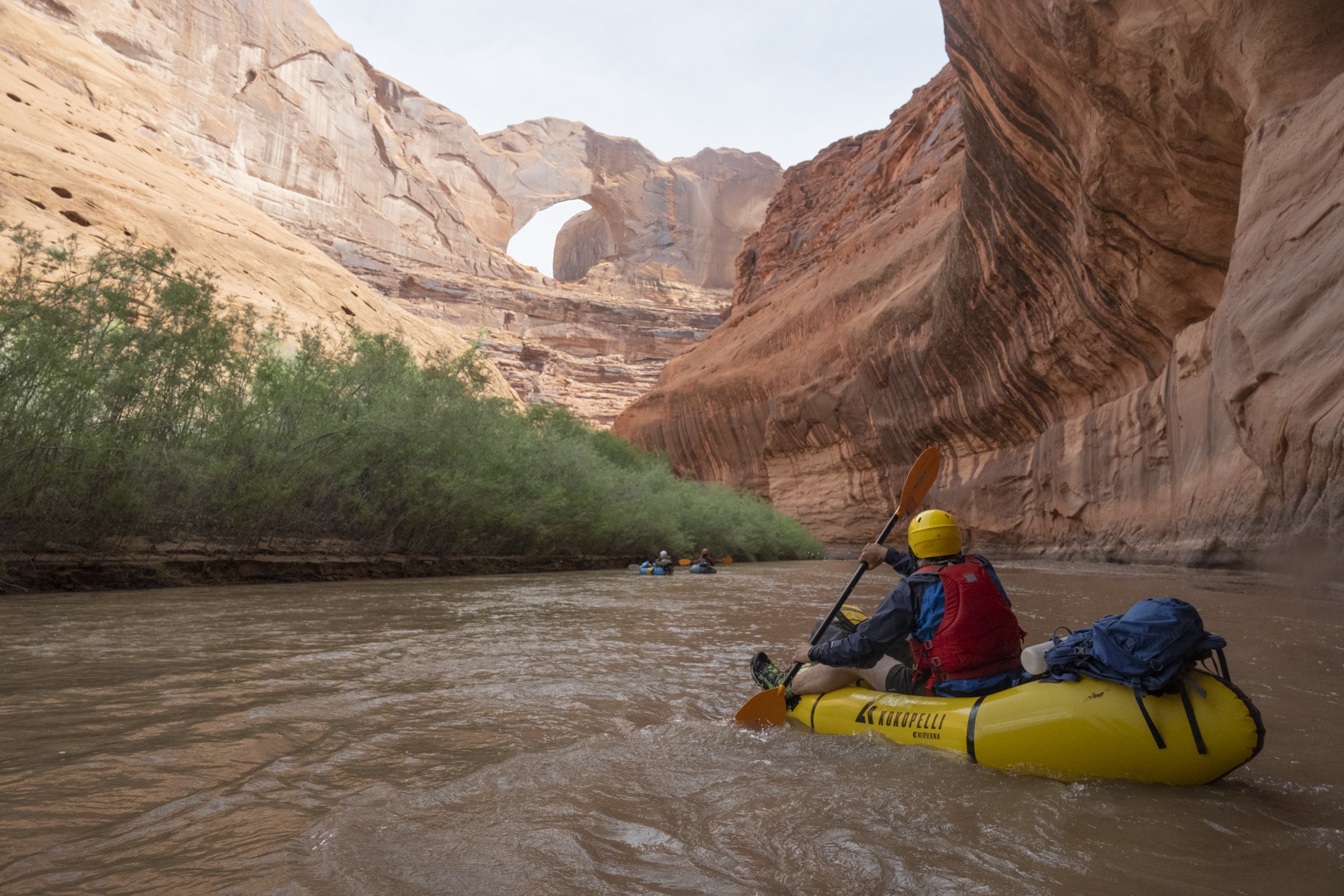
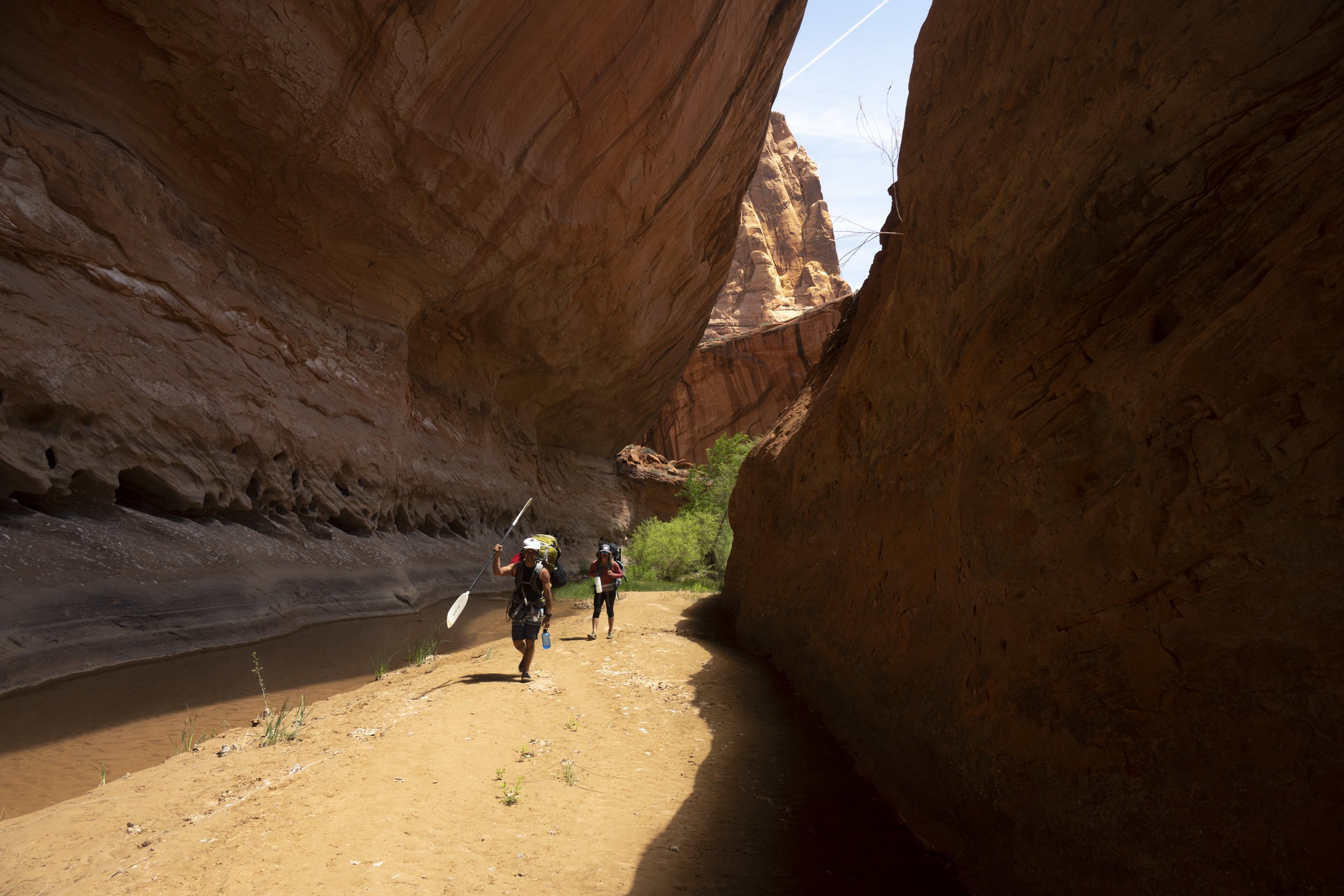
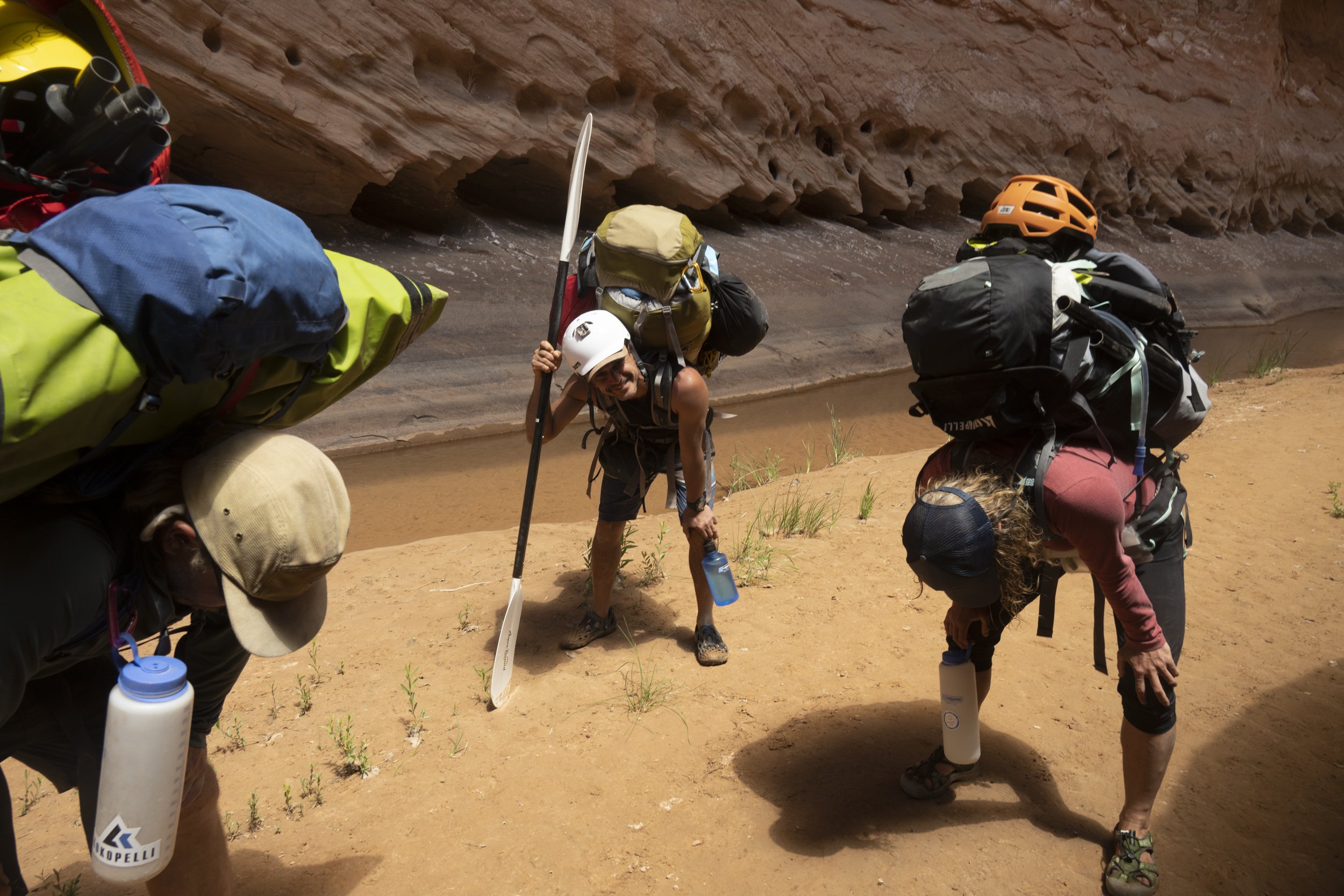
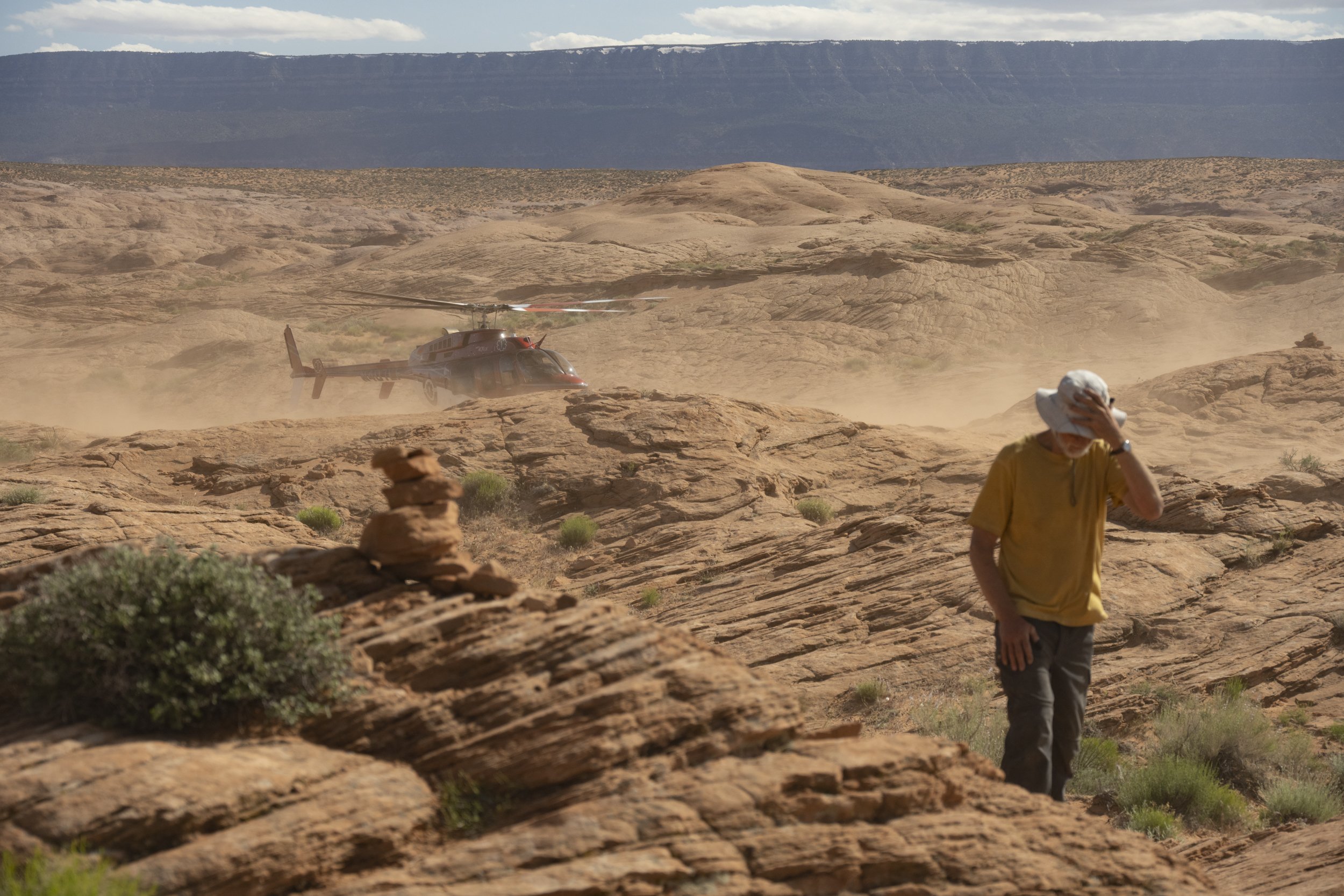
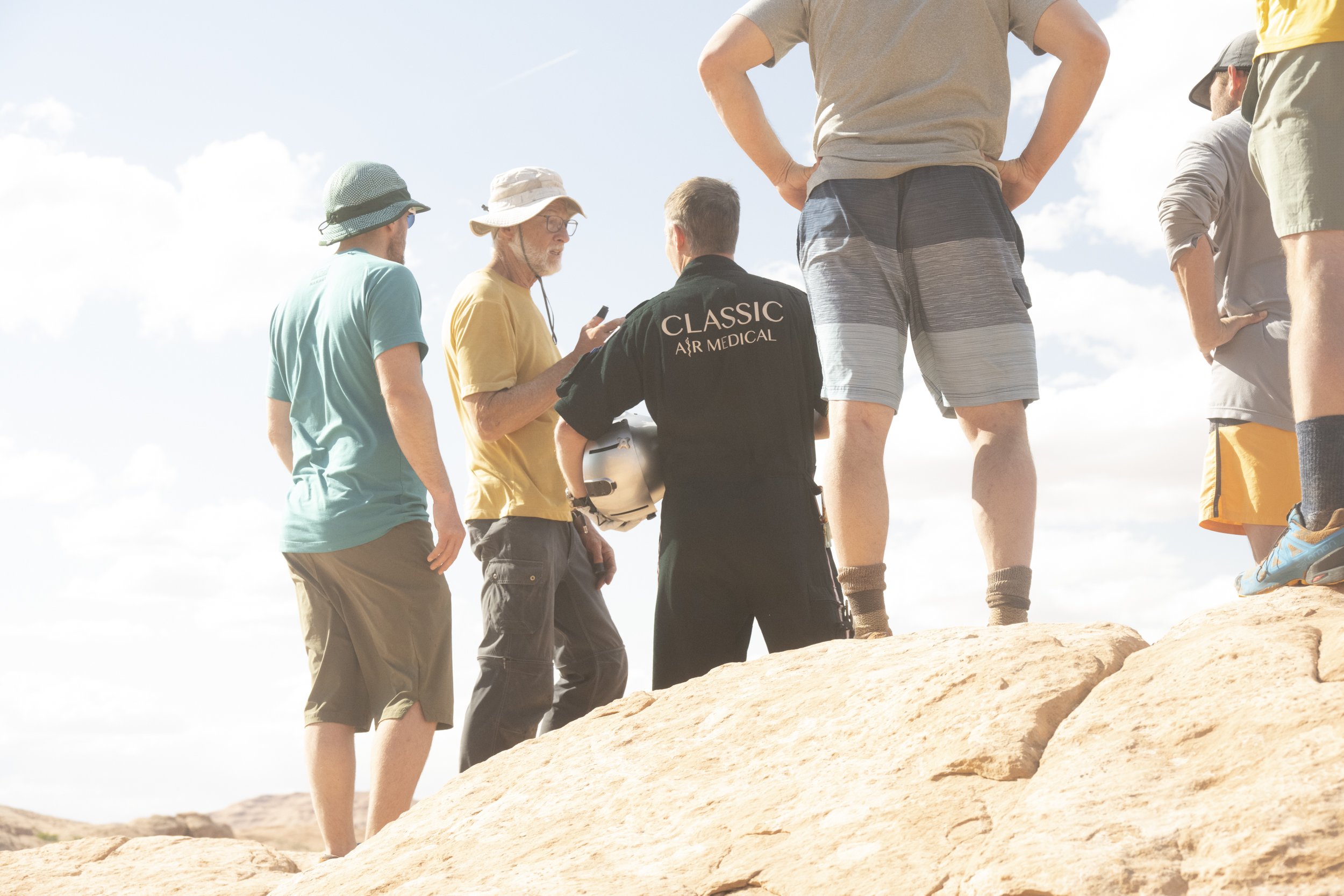
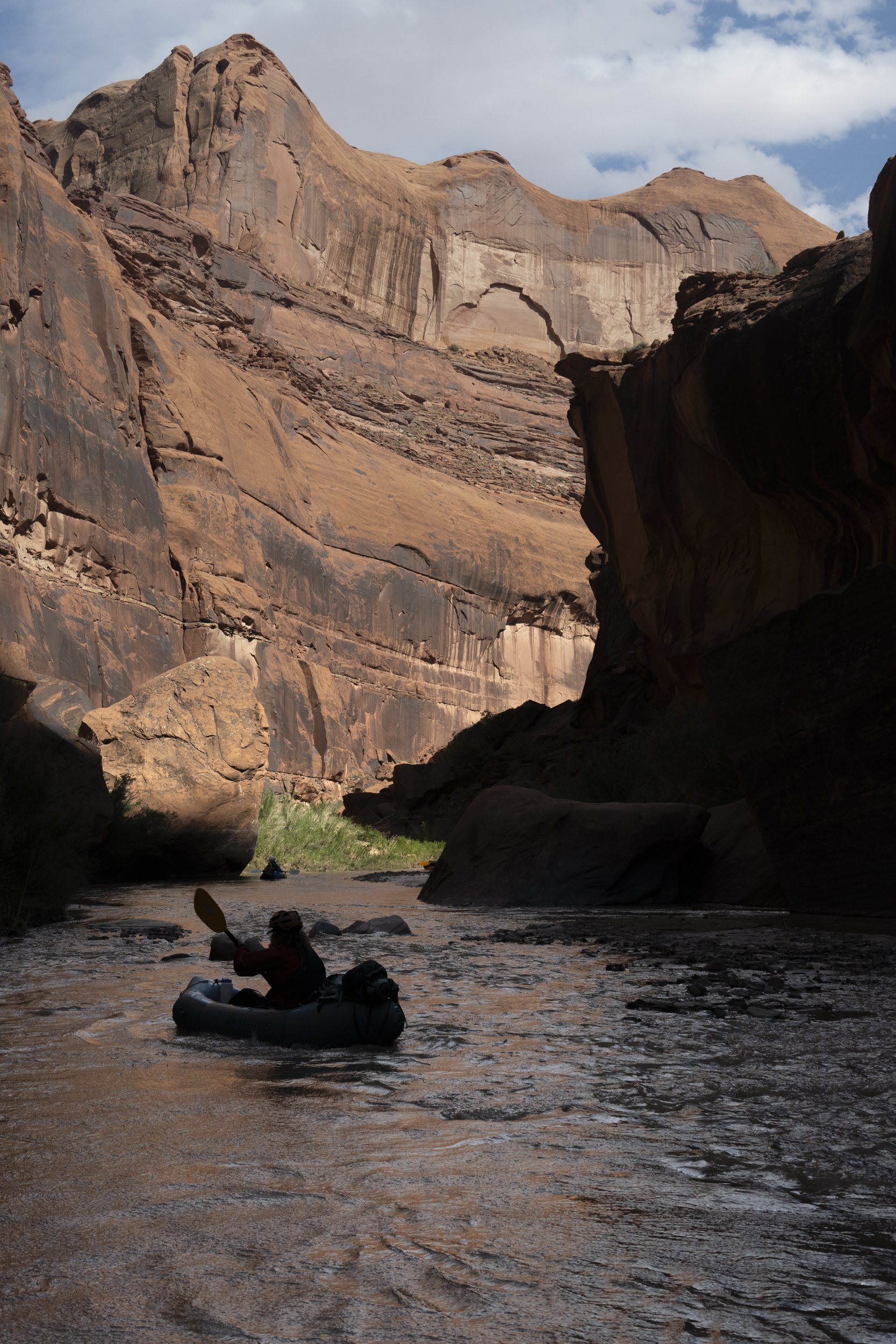
This, my first multi-day packrafting trip has been a revelation. This is a superb way to experience the natural world, free from crowds, in amazing locations, having a great adventure and being able to access places otherwise inaccessible. I’m excited to bring mine to Iceland this winter to paddle into glacier lagoons filled with towering ice blocks to photograph along with scouting for difficult to access ice caves. For sure some stories to share as that adventure ensues and I’m looking forward to sharing those with you who follow along with the blog. Thank you for doing so, this has been a very enjoyable way to share some pieces of life with you all. Happy boating to you all!





